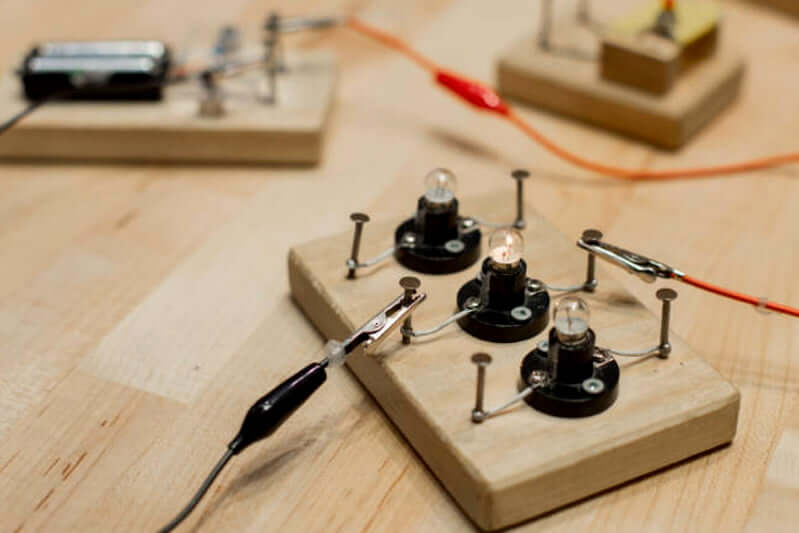Home Examples of Energy Transformations
Examples of Energy Transformations
Our environment is teeming with different types of energy.
Energy transformation is the process of converting one form of energy into another. It can happen through transference or conversion.
Thermodynamics is the study of how energy transforms from one form into another.

Table of Contents
ToggleLaws of thermodynamics
Energy cannot be created or destroyed
The first law of thermodynamics is that energy cannot be created or destroyed.
Energy transforms from one form into another.
For example, energy transformation occurs when solar panels convert sunlight into electrical energy.
Electrical energy converts into light energy in bulbs.
Some forms of energy are more useful than others
Some forms of energy have more uses than others.
The more you use a particular form of energy, the less useful it becomes.
Energy transformation
Energy transformations take place all the time. It can transform into many different forms.
Examples of energy transformations
- Solar energy can be transformed into electrical power. Solar panels facilitate the transformation of solar energy into electrical energy. Solar energy from the sun hits the solar panels. The panels absorb the heat from the sun and convert it into direct current electricity. It is then passed through wires to power a home or factory.
- The sun transforms its nuclear energy into heat and light.
- Our bodies convert chemical energy from the food we eat into mechanical energy for us to function and move.
- Lightning converts electrical energy into light, heat, and sound energy.
- Rubbing hands together for warmth transforms kinetic energy into thermal energy.
- When you use a battery-powered torch, chemical energy in the batteries transforms into electrical energy and in the bulb transforms into radiant energy to give a light beam.
- Geothermal power plants convert heat energy into electrical energy.
- Windmills convert wind energy into mechanical or electric energy.
- When you use a microphone, sound energy is converted into electrical energy.
- Burning wood transforms chemical energy into heat and light energy.
- Plant photosynthesis is a chemical process that transforms solar energy into chemical energy.
- A steam engine transforms heat energy into mechanical energy.
What is energy transfer?
Energy transfer is the movement of energy from one place or object to another.
Energy can be transferred from one point to another in the following ways:
- Mechanically
- Electrically
- Radiation
- Heating
There are three types of energy transfer:
- Conduction is the transfer of energy by direct contact from one molecule to another. For example, heat can be transferred from one object to another in contact.
- Convection is the movement of energy through a fluid or air.
- Radiation is the transfer of energy by electromagnetic waves.

Types of Energy
Mechanical energy
Mechanical energy consists of two types of energy: kinetic and potential. It is the energy an object has due to its position or movement.
Potential energy is the amount of energy an object could develop when it moves. Kinetic energy is the energy of motion.
Thus, mechanical energy is the sum of potential and kinetic energy an object may possess.
Mechanical energy is found in moving objects, kicking or throwing balls, and in some plants.
Thermal energy
Thermal energy is the internal energy present in an object due to its temperature. It is also called heat energy. It is produced when a rise in temperature in an object causes atoms and molecules to move faster.
Thermal energy is felt when it flows from one object to another.
Chemical energy
It is the energy objects produced when they go through a chemical reaction.
Nuclear energy
It is the energy stored in the nucleus of an atom. It is also known as atomic energy.
It is used in the production of clean electricity.
Radiant energy
It is energy emitted from a source as waves. Examples of radiant energy include radio waves, infrared radiation, microwaves, gamma rays, X-rays, and ultraviolet radiation.
Light and sound travel in waves, which makes them radiant energy.
Solar energy
It is energy from the sun.
Sources of energy
Energy can be generated from many different sources:
- Water produces electric energy
- Fossil fuels that produce electrical and thermal energy
- Nuclear energy
- The sun
- Geothermal
- Biomass
- Wind
Renewable energy
Renewable energy is energy collected from renewable sources.
These renewable energy sources include the sun, wind, geothermal, and water.
Benefits of using renewable sources of energy
No emissions
Non-renewable sources of energy produce greenhouse gases that are harmful to the environment.
The renewable energy production, for example solar, does not produce emissions. The emission-free production process makes it suitable for the environment and its users.
Cars and other machines powered by renewable energy sources produce no emissions, making them more efficient and eco-friendly.
Lower carbon footprint
When you use renewable energy, you have a lower environmental impact. Non-renewable energy sources produce high levels of carbon, which adversely affect our environment.
Switching to renewable energy for your home energy needs lowers your carbon footprint and impact to the environment.
Cost-effective
Renewable energy is cost-effective. Using solar panels in your home helps you to save on expensive electricity bills.
Purchasing solar panels is an expensive endavor. However, solar panels last up to 25years. Thus, you will be able to enjoy your investment for a long time. Additionally, you have a 5-7 year return on investment from the large savings you make from your electricity bill.
Improve environmental health
The production of non-renewable energy affects the environment health by causing acidic rain and polluted air.
Increased use of renewable energy improves the health of the environment. Consequently, it eliminates respiratory conditions such as coughs and asthmatic attacks.
Compare Solar Panel Quotes
Table of Contents
Toggle









